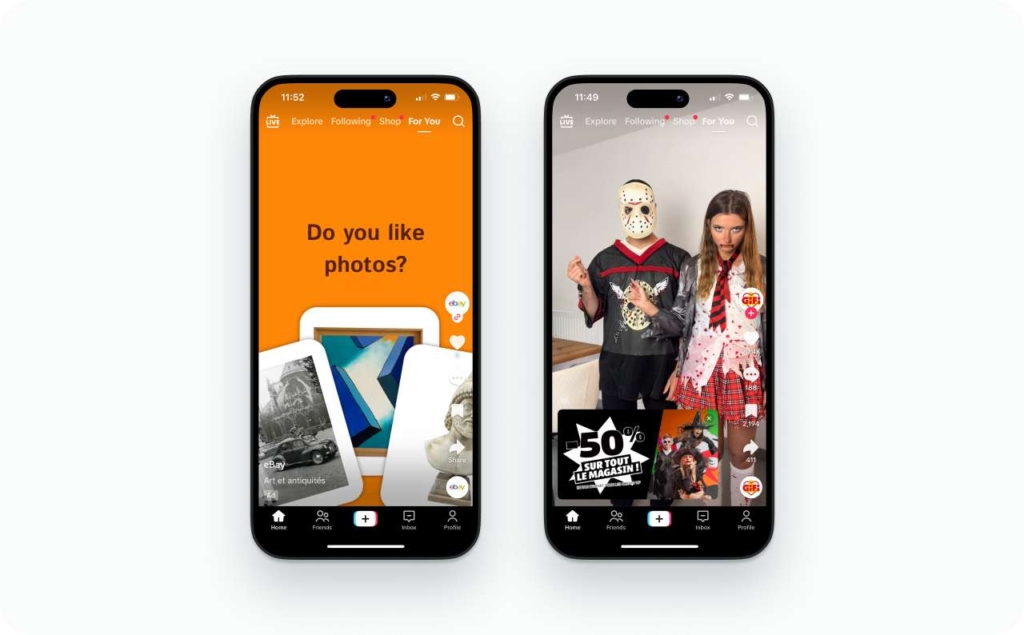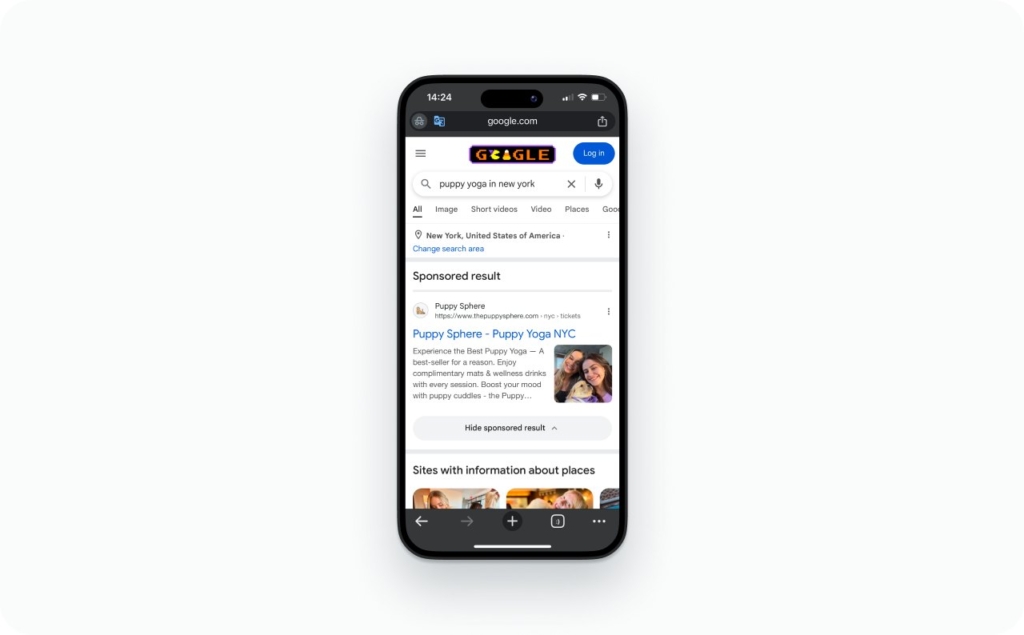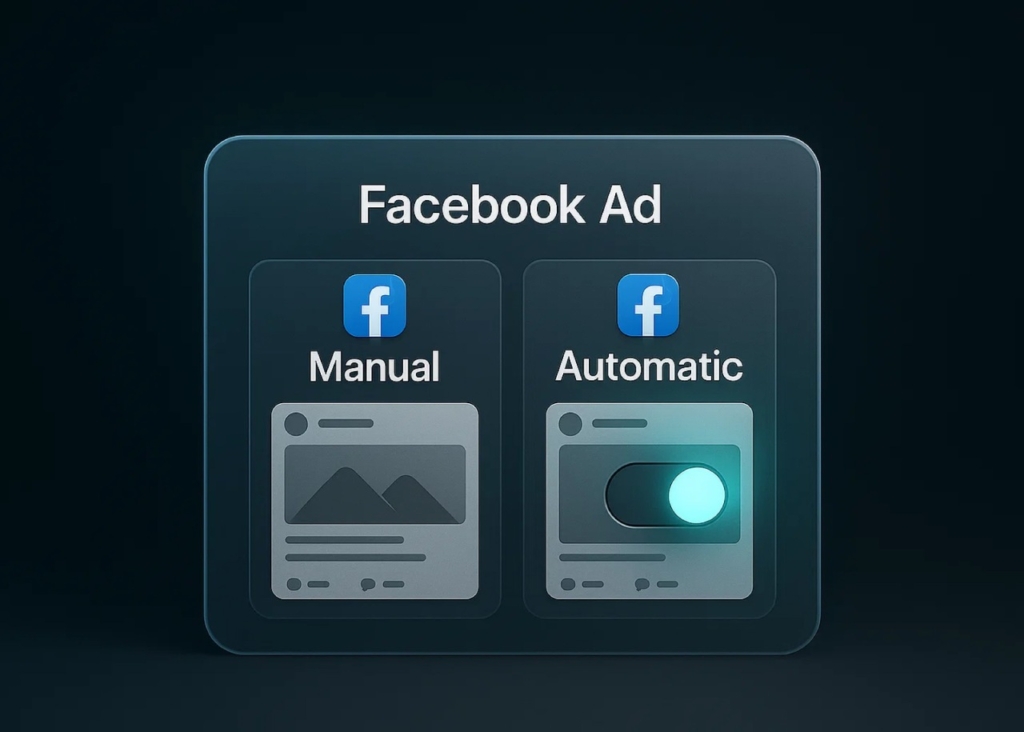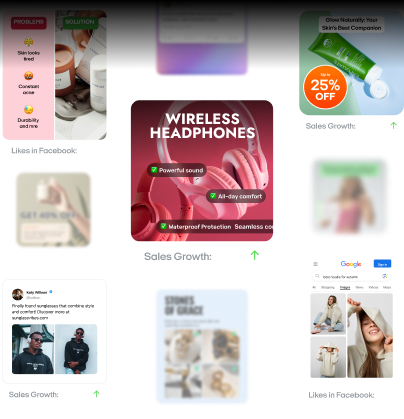Targeted mobile advertising: 8 proven strategies for your business
Learn how to grow faster with targeted mobile advertising. Explore eight proven strategies and discover how Zeely AI helps you create, test, and scale high-performing ads in minutes.
Targeted mobile advertising is now the quiet engine behind modern growth for brands of every size. According to Insider Intelligence, over 80% of all digital ad spend now happens on mobile-first, data-driven campaigns, showing how precision targeting turns reach into real sales. But precision shouldn’t feel complex or out of reach. With the right tools, you can connect with the exact audience ready to act while keeping your budget lean and results clear. This guide breaks down how targeted mobile advertising actually works when it’s built to convert, not confuse.

What is targeted mobile advertising?
Targeted digital advertising helps brands connect with people where they already spend their time on their phones. It uses signals like location, interests, and browsing habits to show ads that feel relevant instead of random. The goal is simple: reach someone who’s ready to engage, not just anyone who happens to scroll by. In 2025, DataReportal reported that 97% of U.S. internet users go online through mobile devices, showing why precision targeting matters more than ever.
Strategy 1: Define goals and a measurement ladder
Strong campaigns start with a clear ladder — a sequence of metrics that show not just what happened, but what to do next. Targeted mobile advertising only works when you know how to read its signals and act fast.
Each rung reveals a decision point: if performance meets or beats the threshold, scale; if it falls short, either fix or retire. That’s how teams avoid guesswork and turn data into clarity.
| KPI | Applies to | Threshold | Action |
| Viewability | All formats | 70%+ | If lower, review load speed or placement |
| VTR50/100 | Video ads | 50% / 25% | Keep if above; iterate if not |
| Interaction rate | Rich media / interactive | 3–6% | Scale if higher; adjust creative if lower |
| Dwell time | All | 5–8 seconds | Keep if users stay engaged |
| CTR | Display / video | 0.5–1% | Kill weak variants; test new hooks |
| CVR | Landing flow | 3–5% | Scale high-performers; refine UX below target |
| Incrementality | Geo holdouts | +5–10% | Use to validate spend efficiency |
According to Nielsen’s Annual Marketing Report 2025, marketers who measure incrementality alongside CTR and CVR see up to 22% higher ROI, this is a proof that what you track determines what you grow.

Photo source: eBay and GiFi ads on TikTok
Strategy 2: Organize targeting by decision axes
Think of targeting as a set of smart choices, not a list of settings. The best mobile advertising targeting works when every decision connects back to intent, who you reach, where you find them, and when they’re most open to act.
Who: Start with people who actually care. Build audiences from demographics, interests, or lookalikes that reflect real intent.
Example: A gym reaches 25–40-year-olds who already follow fitness creators.
Where: Meet them in the right place. Geofencing and proximity targeting help you reach people close enough to visit.
Example: A coffee shop promotes morning deals within one mile of its stores.
When: Time your message to match behavior. Use dayparting to appear during high-attention windows.
Example: A delivery app pushes lunch offers between 11 a.m. and 2 p.m.
Context: Your message makes more sense when it fits the content around it.
Example: A travel brand shows up beside vacation guides, not random news feeds.
Environment: Decide how the ad feels, for example, inside an app or across the mobile web. In-app often drives stronger engagement and recall.
HubSpot’s 2025 State of Marketing found that 71% of top performers credit structured audience targeting for better ROI, proving that organized focus beats broad reach every time.

Photo source: @originality.ai and @edheconline ads on Instagram
Strategy 3: Build a geo playbook that drives action
Precision is what turns mobile geo targeting advertising from reach into real-world movement. A strong geo playbook uses radius targeting for nearby reach and POI bundles for specific intent zones like malls, gyms, or gas stations. These areas reveal intent before a click ever happens.
Use conquesting geofences to surround competitor locations and capture users while they’re considering alternatives. Then layer offer timing, morning coffee runs, afternoon errands, or evening dining, to match moments that convert. When each fence ties to a purpose, every impression has context.
What you measure matters most. Track map-open rate, store-locator taps, in-store visits, and incremental lift from geo holdouts to see which areas truly drive action. When lift is consistent, expand the radius. When taps stall, tighten your zone or refresh creative.
Deep links close the loop. Link directly to the nearest store, cart, or promo page so there’s no friction between intent and action. Use deferred deep links for new installs so the user still lands in the right place after downloading your app. That single detail often separates a campaign that informs from one that converts.
| Geo signal | Measure | Decision |
| Map-open rate | Curiosity | Iterate creative or CTA |
| Store-locator taps | Intent | Keep or scale |
| In-store events | Proof of action | Scale winning zones |
| Incremental lift | Validation | Confirm spend efficiency |
According to Business Insider, geo targeted mobile advertising drove a 27% higher action rate for brands using real-time location and deep linking, confirming that movement data is opportunity.
Sidebar: As consent rules evolve, the location targeted mobile advertising market is shifting toward privacy-safe signals and opt-in transparency, keeping relevance without overreach.

Photo source: Google GEO targeting ad
Strategy 4: Build privacy-safe audiences with contextual + first-party data
In 2025, successful mobile advertising targeting starts with trust. As third-party cookies fade and Apple’s ATT reshapes tracking, brands are leaning on contextual targeting and first-party data to stay both effective and compliant. It’s the new baseline for privacy-safe mobile advertising — scalable, transparent, and user-first.
Contextual targeting delivers relevance without identifiers by placing your message inside content that already matches user intent. Combine this with first-party consented lists, collected through clear opt-ins or purchase activity, and you create audiences that perform while respecting choice. A lightweight CMP helps you gather approvals simply and show users what they’re agreeing to.
Example consent microcopy:
- “We personalize ads based on the page you’re viewing, not personal data”
- “Your info stays private. You can update consent anytime”
Then align your creative and targeting context — a skincare brand beside wellness articles, or a travel ad within trip-planning content. This harmony keeps engagement high and fatigue low.
Use compliant audience modeling to extend your reach. Merge contextual patterns with anonymized first-party insights to find lookalike segments that mirror intent without crossing privacy lines.
According to Google Marketing Live 2025, advertisers blending contextual and first-party data in mobile ad campaigns saw 33% higher engagement and stronger conversion consistency, proving that privacy-focused strategy can boost performance, not limit it.
Strategy 5: Allocate spend between in-app and mobile web
Every impression lives somewhere. The question is where your money works harder inside apps or across the mobile web. Both environments offer distinct mobile advertising targeting capabilities, and the best results usually come from a hybrid mix rather than an either/or choice.
Start with a decision matrix that weighs key factors:
| Factor | In-App | Mobile Web |
| Accuracy | Device ID delivers stable targeting | Cookies fluctuate and expire |
| Viewability | Higher; full-screen formats dominate | Moderate; depends on browser load |
| Ad-block exposure | Minimal | High in some browsers |
| Cost | CPM often higher, but efficiency stronger | Lower CPM, broader reach |
| Time spent | Users spend longer sessions in fewer apps | Quick hits across many sites |
Use this matrix to balance investment by goal. For engagement or conversions, prioritize in-app placements where attention lasts longer. For reach or retargeting, mobile web extends visibility at lower cost.
Vary your creative and call-to-action per environment. In-app ads perform best with immersive formats like rewarded videos or carousel CTAs that open directly to cart or install pages. Mobile web ads benefit from lightweight visuals and concise hooks that load fast and drive click-throughs.
A hybrid buy blends both: allocate around 60–70% in-app for depth and the rest to mobile web for breadth.
According to Investopedia, users spent 8% less total time in apps last year but 14% more per session, showing that fewer, better-placed experiences now outperform sheer frequency.
Strategy 6: Optimize for network and device realities
Performance is also about how fast and smoothly that creative loads. Smart mobile advertising adapts to the user’s actual conditions, not just their interests. Detect whether a device is on Wi-Fi or cellular, then adjust delivery in real time. Heavier video assets can run on Wi-Fi, while lighter HTML5 or static versions load instantly on slower connections.
Use adaptive bitrate streaming for video to maintain quality without buffering, and always prepare a static fail-safe for low-bandwidth cases. Quick loads protect both experience and brand perception — a lagging ad is a lost impression.
Apply OS, device, and carrier targeting only when it improves relevance. Over-segmenting fragments reach and drives up cost. Let performance data guide which configurations truly convert rather than guessing by hardware specs.
According to Think with Google, mobile users are 53% more likely to abandon an ad or site if load time exceeds three seconds, yet campaigns optimized for device and network context see up to 2.4× higher engagement rates. Building speed and adaptability into your setup keeps every ad visible, viewable, and ready to perform wherever it lands.
Strategy 7: Creative sop for thumbs and sensors
Good creative is about how it moves through someone’s hands. In target mobile advertising, design for speed, motion, and instinct. Most users decide within one or two seconds whether to keep watching, so your hook has to earn attention instantly.
Start with large tap targets and captions by default so no message depends on sound. Add gesture hints, a small “swipe to reveal” or “tilt to explore”, to turn passive viewing into interaction. Keep safe zones clear of UI overlays and brand elements visible at all times. Use polite load to ensure assets don’t stall, and always close with a strong end-frame CTA that makes the next step obvious.
Format cheatsheet
| Format | Best use | Creative focus |
| Native | Mid-funnel education | Match content tone and placement context |
| Interstitial | Reach bursts | Tight frequency cap; bold, simple visuals |
| Rewarded video | Value exchange | Encourage completion; brand-safe in games |
| Audio | Commute or daypart | Pair with companion display or short voice CTA |
Test interaction early and often. If gesture rates rise but CTR drops, revisit your end-frame offer. If completions lag, cut the first two seconds and restate the hook sooner.
Strategy 8: Frequency, pacing, and sequencing guardrails
In mobile advertising targeting, control is as important as creativity. Even the most engaging campaign loses impact when it oversaturates the same audience. Set frequency caps early to keep balance between reach and relevance: banners 3–5 per day, interstitials 1–2 per day, and rewarded videos 1 per day per title. These pacing rules protect both user experience and campaign efficiency.
Monitor for ad fatigue, rising impressions with falling CTR, dwell time, or completion rate, and respond fast. Rotate creatives, refresh hooks, or shift placements before users tune out. A simple rotation rule keeps performance fresh and consistent across all mobile ad formats.
Plan sequencing with intent: start with awareness, follow with utility, and close with a concise reminder. Each step should get shorter and more action-focused, guiding users naturally from curiosity to click.
When pacing and sequence align, your campaign earns trust instead of irritation.
According to YouTube Brandcast 2025, mobile video advertisers using structured sequencing and frequency caps achieved 29% higher ad recall, 22% stronger engagement, and 34% lower skip rates, proving that pacing and thoughtful repetition sharpen every impression.

Photo source: YouTube Brandcast 2025
Why you need an AI ad generator for targeted mobile advertising
Mobile marketing moves fast, and keeping up manually costs both time and consistency. That’s where an AI ad generator changes everything. The Zeely app is an all-in-one AI ad generator built for automated ad creation — from static and video ads to full campaign setup and optimization. It turns your product details or website link into ready-to-launch creatives that meet the performance standards of top brands, without needing a designer or ad agency.
How Zeely helps you grow faster
- Save time with instant ad creation. What used to take hours in design tools now takes minutes
- Launch high-converting ads automatically optimized for Meta, Instagram, and TikTok placements
- Boost ROI by letting AI test variations of visuals, hooks, and CTAs so you only scale what performs
- Enjoy easy ad creation with ready templates for product shots, brand colors, and on-screen text
- Run scalable advertising — build, test, and expand across multiple campaigns at once, powered by automation
- Simplify Meta and Shopify integration, so your ads stay synced with your catalog, pricing, and inventory
- Stay consistent across formats, from vertical video to carousel banners, with adaptive layouts optimized for mobile
An AI ad generator is the foundation of modern, targeted mobile advertising. Zeely makes it effortless to create, test, and scale campaigns that convert while you focus on growth.
Start using Zeely today to create high-performing ads in minutes, not hours, and see how simple growth can be.
Also recommended



